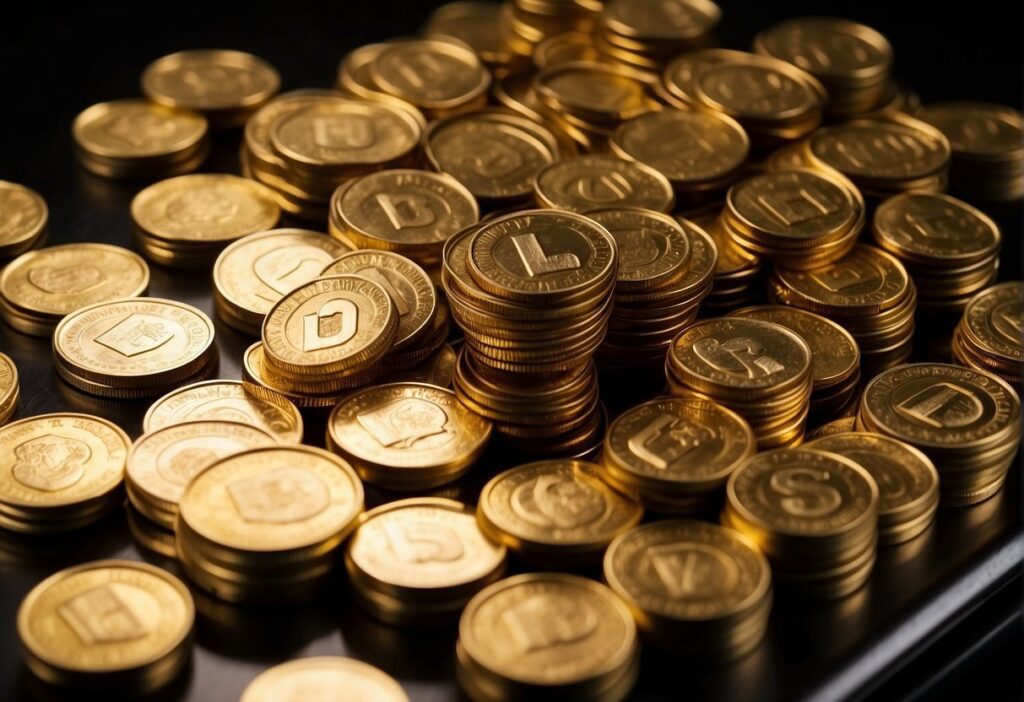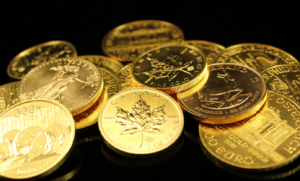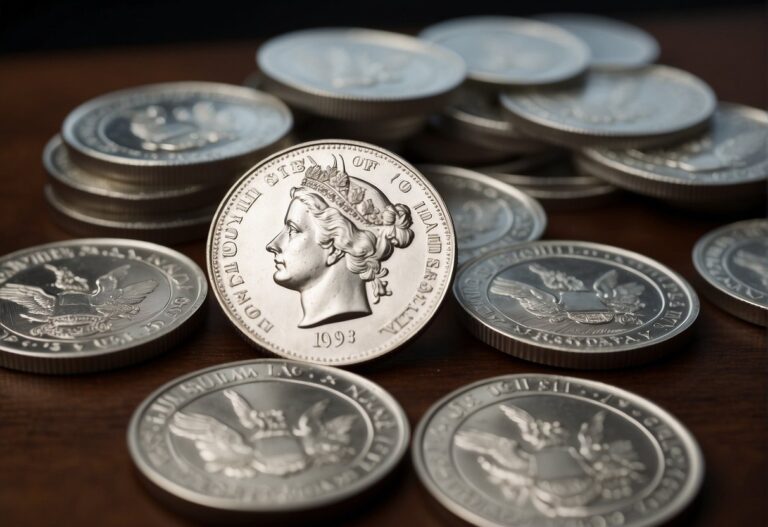A Precious Metals IRA account enables the individual to hold such assets in a retirement account, which involves physical storage and security considerations, unlike paper assets.
Individual Retirement Accounts (IRAs) provide a stable groundwork for retirement planning, and a unique subset of IRAs is available for those interested in investing in physical precious metals.
Authorized metals include gold, silver, platinum, and palladium, which have historically acted as a safeguard against the instability of stock markets and inflation.
Establishing a Precious Metals IRA requires choosing a qualified custodian who can handle the particulars of these accounts, which include adhering to specific IRS rules regarding eligibility, contributions, and storage.
Contributions to a Precious Metals IRA can be made as with any other IRA, and the same annual contribution limits apply.
These IRAs also offer tax advantages that mimic those of traditional retirement accounts. Yet, the rules about the types of metals that can be included and how they must be stored are nuanced.
Precious Metals IRA Account Key Takeaways
- Precious Metals IRA permits investment in physical gold, silver, platinum, and palladium as part of retirement savings.
- Choosing a qualified custodian and understanding IRS regulations is crucial for setting up a Precious Metals IRA.
- These accounts offer potential tax advantages and must adhere to specific storage requirements to ensure the security of the physical assets.
Understanding Precious Metals IRA Accounts
In the landscape of retirement savings, a Precious Metals IRA offers a tangible asset alternative to traditional stock and bond investments. These accounts are a type of Self-Directed IRA that specifically allow the inclusion of gold, silver, and other metals.
Definition and Purpose of Precious Metals IRA
A Precious Metals IRA is a Self-Directed IRA (SDIRA) that permits individuals to invest in physical precious metals such as gold, silver, platinum, and palladium.
Its primary purpose is to provide diversification in a retirement portfolio. A Precious Metals IRA can hedge against market volatility and inflation by holding assets that often move inversely to market trends.
Types of Precious Metals IRAs
There are two main types of Precious Metals IRAs, characterized by their tax treatment:
- Traditional Precious Metals IRA: Contributions are typically made with pre-tax dollars, with taxes deferred until withdrawals are made in retirement.
- Roth Precious Metals IRA: Contributions are made with after-tax dollars, offering the benefit of tax-free growth and tax-free withdrawals in retirement.
Each type of Gold IRA follows the general rules of its Traditional or Roth counterparts but is unique in that it allows the inclusion of specified precious metals as investment vehicles.
Precious Metals IRA Account Eligibility and Setup
When considering a Precious Metals Individual Retirement Account (IRA), specifically for assets like gold and silver, one must navigate the eligibility criteria and understand the proper setup steps.
These factors are crucial to legally reap the benefits tied to precious metals as a retirement investment strategy.
Qualifying for a Precious Metals IRA Account
To qualify for a Precious Metals IRA, investors must meet certain conditions:
- Age: Individuals must be at least 18 years old.
- Income: They should have earned income in the most recent tax year.
- IRA Custodian: A self-directed IRA is required, which involves appointing an approved IRA custodian capable of handling precious metal investments.
- Non-disqualified Person: The investor cannot be disqualified, which means engaging in transactions or deals with the IRA directly or indirectly.
The Internal Revenue Service (IRS) mandates that metals held in these IRAs must meet specific purity standards, limiting holdings to certain forms of gold, silver, platinum, or palladium.
Steps to Open a Precious Metals IRA Account
Setting up a Precious Metals IRA involves a few detailed steps:
- Select an IRA Custodian: Choose an IRA custodian who specializes in or allows self-directed IRAs that can hold physical precious metals.
- Open an IRA Account: Complete the necessary paperwork to establish the retirement account with the chosen custodian.
- Fund the IRA: Transfer funds into the new account. This can be done through a rollover from an existing retirement account or by depositing cash.
- Purchase Precious Metals: Once funding is complete, select the appropriate precious metals such as gold, silver, platinum, or palladium that comply with IRS regulations.
- Storage: The IRA custodian will then ensure that the purchased metals are securely stored in a depository that meets IRS security and compliance standards.
Choosing the Right Gold IRA Custodian
Selecting the proper custodian is critical when setting up a Precious Metals IRA. The custodian manages your account, ensures adherence to all regulations, and secures the storage of your assets.

Precious Metals Custodian Responsibilities
Custodian Responsibilities are paramount in managing a Precious Metals IRA.
A custodian typically is a financial institution that has received approval from federal and state agencies to offer asset custody services. Their primary tasks include:
- Account Setup and Management: They oversee the creation of your IRA account, provide guidance on account types and rollover options, and ensure compliance with IRS regulations.
- Storage Handling: Custodians must store the physical precious metals in secure, approved depositories. Clients typically cannot store their IRA precious metals at home or in a personal safe deposit box.
How to Select a Trusted Custodian
To Select a Trusted Custodian, here are concrete steps to take:
- Compare Custodial Fees: Examine the fee structures of potential custodians. Look for transparency in the fees being charged and confirm no concealed expenses.
Fee Type Description Annual Account Fee A fixed charge for account maintenance Transaction Fees Costs associated with buying or selling metal Storage Fees Fees for storing precious metals in depositories - Evaluate Reputation and Trustworthiness: Opt for custodians with robust credibility in the industry. Confirm that they have a strong track record of regulatory compliance and positive customer reviews.
- Verify Access to Approved Storage Facilities: Ensure the custodian offers storage solutions through approved depositories. These facilities should have top-tier security measures in place to safeguard your investments.
Investment Options
When considering Investment Options in a Precious Metals IRA, investors have specific physical products they can include. The options are typically restricted to certain coins, bullion, and bars that meet the fineness standards set by the IRS.
IRA Eligible Precious Metals Products
The Internal Revenue Service (IRS) stipulates that only certain precious metals products are eligible for a Precious Metals IRA. These must meet minimum fineness requirements: silver (0.999), gold (0.995), platinum (0.9995), and palladium (0.9995).
The following are examples of approved products:
- Gold: American Eagle coins, Australian Kangaroo/Nugget coins, Canadian Maple Leaf coins, and bars and rounds produced by manufacturers accredited by NYMEX/COMEX, LME, LBMA, NYSE/Liffe, TOCOM, ISO 9000, or national government mints with minimum fineness required.
- Silver: American Eagle coins, Canadian Maple Leaf coins, Austrian Philharmonic coins, and bars and rounds produced by manufacturers accredited by the entities above, with a minimum fineness requirement.
- Platinum and Palladium: American Eagle coins, Canadian Maple Leaf coins, and other bars and rounds of appropriate fineness.
Gold IRA Coins, Bullion, and Bars
Eligible coins for a Precious Metals IRA include:
- American Eagle coins: Widely recognized and guaranteed by the U.S. government for their precious metal content.
- Canadian Maple Leaf: Known for its purity and backed by the Canadian government.
Bullion and bars must be produced by an accredited manufacturer or refiner and must meet strict fineness requirements. They are valued based on their metal content and market price rather than their rarity or aesthetic appeal.
Precious Metals IRA Account Funding
Precious Metals IRAs are subject to specific rules regarding funding and contributions. They involve various methods, including direct transfers, rollovers, and contributions that comply with annual limits. Each method affects the potential for tax-deferred growth in the account.
Contribution Limits and Guidelines
The contribution limits for a Precious Metals IRA mirror those of regular IRAs. For 2024, individuals can contribute $6,000 or $7,000 if they are 50 or older.
These contributions can be tax-deductible, depending on the individual’s income level and participation in employer-sponsored retirement plans.
- Under age 50: $6,000
- Age 50 or above: $7,000
These contributions must be in cash or a cash equivalent; after-tax dollars are used for funding a Precious Metals IRA.
Precious Metals IRA Direct Transfers and Rollovers
A direct transfer entails moving funds between like accounts, such as from one IRA to another. It can be executed without any tax implications.
Conversely, a rollover involves moving assets from a 401(k) or similar retirement account into a Precious Metals IRA. When executed correctly, a rollover is also a tax-deferred event. However, rollovers must be completed within 60 days to avoid taxes and potential penalties.
Silver IRA Account Storage and Security
Storing physical assets is critical to a Precious Metals IRA, governed by stringent IRS regulations.
Custodians store metals in approved depositories, ensuring security and compliance.
Approved Precious Metals IRA Depositories
In a Precious Metals IRA, the IRS mandates that all physical assets, such as gold or silver, must be held by a custodian in an IRS-approved depository.
The primary role of the custodian is to safeguard the assets, which requires them to choose a depository that adheres to the highest security standards.
These approved depositories specialize in storing precious metals and provide secure facilities to protect an investor’s tangible assets.
Storage Fees and Policies
The custody of precious metals incurs storage fees and policies that an investor must understand:
- Storage Fees: The depository typically charges annual fees to cover the cost of storing and safeguarding the precious metals. The fees can vary based on the total value or the amount of metal being stored.
- Insurance and Liability: Approved depositories must have insurance policies that offer liability protection against theft or damage.
- Inspections and Audits: Regular inspections and audits of the metals are conducted to ensure compliance and inventory accuracy.
By selecting an IRS-approved custodian and depository, investors can be confident in the security and legitimacy of their precious metals investments within their IRAs.
Precious Metals IRA Tax Rules
In a Precious Metals Individual Retirement Account (IRA), understanding the tax rules and identifying the advantages is crucial for informed investing. They offer unique tax benefits that can affect one’s retirement savings strategy.
Understand Tax Implications Of Precious Metals IRAs
Taxation on Precious Metals:
- Traditional IRA: Deposits are often tax-deductible, but withdrawals in retirement are taxed as income.
- Roth IRA: Contributions are taxed upfront, but qualified withdrawals, including gains, are tax-free.
- Penalties: Early withdrawals may incur a 10% penalty and taxes, depending on the account type.
- Required Minimum Distributions (RMDs): Account holders must start taking RMDs at age 72, subject to taxes.
Precious Metals IRAs are subject to the same basic tax rules as other IRAs. Still, they must comply with specific Internal Revenue Service (IRS) regulations regarding the purity and storage of the metals.
Tax Benefits of Precious Metals IRA
Tax-Deferred Growth:
- Investments grow tax-deferred in both Traditional and Roth Precious Metals IRAs.
- No capital gains tax is levied until distribution for a Traditional IRA, enhancing the potential compound growth effect.
Tax-Free Proceeds:
- Roth IRAs provide the benefit of tax-free growth on investments as long as distributions are qualified.
Liquidity and Transfers:
- Transferring funds from an existing IRA to a Precious Metals IRA can occur without immediate tax penalties.
- Liquidity in these IRAs may be affected by the physical nature of the asset, but IRS guidelines allow for certain forms of precious metals.
Managing the A Precious Metals IRA Account
Managing a Precious Metals Individual Retirement Account (IRA) involves strategic investment decisions and understanding IRS distribution regulations.
This section guides users through the account’s investment choices and clarifies the Required Minimum Distributions (RMDs) rules.
Making Investments and Trades
When managing their Precious Metals IRA, investors can diversify their retirement portfolio with gold, silver, platinum, and palladium. However, these precious metals must meet specific standards:
- Gold: A minimum fineness of 99.5%
- Silver: A minimum fineness of 99.9%
- Platinum and Palladium: A minimum fineness of 99.95%
To make investments or trades within the IRA, the account holder must work with an IRA trustee specializing in precious metals.
Investors can choose bullion coins or other eligible precious metal products to include in their retirement savings.
Understanding Required Minimum Distributions
Investors must comprehend the implications of Required Minimum Distributions (RMDs) for their retirement accounts.
The IRS mandates that RMDs begin when the account holder reaches age 72. Failure to withdraw the appropriate amount could result in significant penalties.
The calculation of RMDs is based on the account balance and the investor’s life expectancy.
It’s crucial to seek precise, up-to-date information on RMD calculations for precious metals IRAs, as these can differ from other retirement accounts.
Diversification and Risks
Diversification through a Precious Metals IRA can mitigate risks associated with market volatility. Incorporating different assets, such as gold and silver, into an investment portfolio may provide a hedge against inflation and economic uncertainty.
Benefits of Diversification
Diversification is a strategy that spreads risk by allocating investments across various financial instruments, sectors, and other categories. It can be essential for retirement savings, where the goal is to grow and protect wealth over the long term.
By including precious metals in one’s IRA, an investor diversifies beyond traditional assets like stocks and mutual funds.
This variety can make a portfolio less susceptible to market fluctuations associated with any single asset class.
- Precious metals tend to move inversely to some traditional investments, offering balance.
- A metals dealer may assist an investor in purchasing IRA-eligible metals, contributing to a well-rounded retirement strategy.
Potential Risks and Volatility
Despite the benefits, diversifying with precious metals entails potential risks and volatility.
The price of metals like gold and silver can be volatile, reacting quickly to economic uncertainty or sudden market changes.
- Liquidity: Physical metals may not be as liquid as stocks, potentially impacting the timely conversion to cash.
- Price Fluctuations: Global economic factors can significantly affect Metals, leading to sharp price increases or decreases.
Investors witness both short-term volatility and long-term price movements in precious metals, which can have both positive and negative impacts on an investment portfolio.
It’s crucial to understand that while precious metals can serve as a hedge against inflation, they are not free from risk and do not guarantee growth.
Planning for Retirement
Regarding retirement planning, the stability of one’s investment portfolio is paramount.
A Precious Metals Individual Retirement Account (IRA) can diversify investment portfolios away from the typical stock market assets, potentially reducing risk and enhancing long-term growth prospects as one approaches retirement age.
Long-term Strategies for Precarious Metals IRA
Investing in a Precious Metals IRA allows individuals to include physical gold, silver, platinum, or palladium in their retirement accounts.
These tangible assets can counterbalance stock market volatility, often retaining value even when paper assets decline.
When considering long-term strategies, investors should consider tax advantages such as tax-deferred or tax-free growth—depending on whether the IRA is Traditional or Roth.
Individuals must work with a financial advisor to determine the appropriate allocation of precious metals within their retirement strategy. This will ensure they meet their long-term financial goals without undue exposure to risk.
Retirement Portfolio Optimization
A Precious Metals IRA is about adding stability and optimizing your retirement portfolio for potential growth.
To do this effectively, one must understand the rules and implications of holding such assets:
- Precious metals must be held in a secure depository to comply with IRS regulations.
- The retirement account must be self-directed, granting the investor more control over their portfolio.
Frequently Asked Questions
This section aims to clarify common queries regarding establishing and managing precious metals IRAs.
What are the eligibility criteria for opening a precious metals IRA?
To open a precious metals IRA, an individual must have earned income and meet certain age and income restrictions for traditional IRAs.
The investor also needs to set up a self-directed IRA through a custodian that permits the inclusion of precious metals.
How does a precious metals IRA differ from a traditional IRA?
While traditional IRAs typically hold stocks, bonds, and mutual funds, a precious metals IRA allows for the inclusion of specific forms of gold, silver, platinum, and palladium in compliance with IRS standards. This offers a diversification option catered to individuals looking for alternative assets.
What are the IRS rules regarding contributions to a precious metals IRA?
Contributions to a precious metals IRA are subject to the same annual contribution limits as traditional and Roth IRAs.
For 2023, the limit is $6,000, or $7,000 if the account holder is 50 or older. The type and purity of precious metals contributed must also align with IRS regulations.
According to IRS guidelines, what types of precious metals are allowed in an IRA?
The IRS permits particular bullion and coins to be held in a precious metals IRA.
These must meet minimum fineness requirements—.995 for gold, .999 for silver, .9995 for platinum, and .9995 for palladium.
Some exceptions include the permitted American Eagle coins despite not meeting these fineness criteria.
What are the tax implications for investing in a Gold IRA?
A Gold IRA has tax advantages similar to those of traditional IRAs.
Contributions can be tax-deductible, and investments grow tax-deferred. Taxes are paid when distributions are taken, usually at retirement, when the owner may be in a lower tax bracket.
Precious metals sold within the IRA may also be subject to capital gains tax.
How do precious metals IRA rollovers work, and what are the regulations?
A rollover involves transferring funds from an existing retirement account into a precious metals IRA without facing any tax penalties.
One must adhere to IRS rollover rules, such as the 60-day rollover period.
Direct transfers between custodians are also possible and can circumvent the potential for personal tax liabilities.



